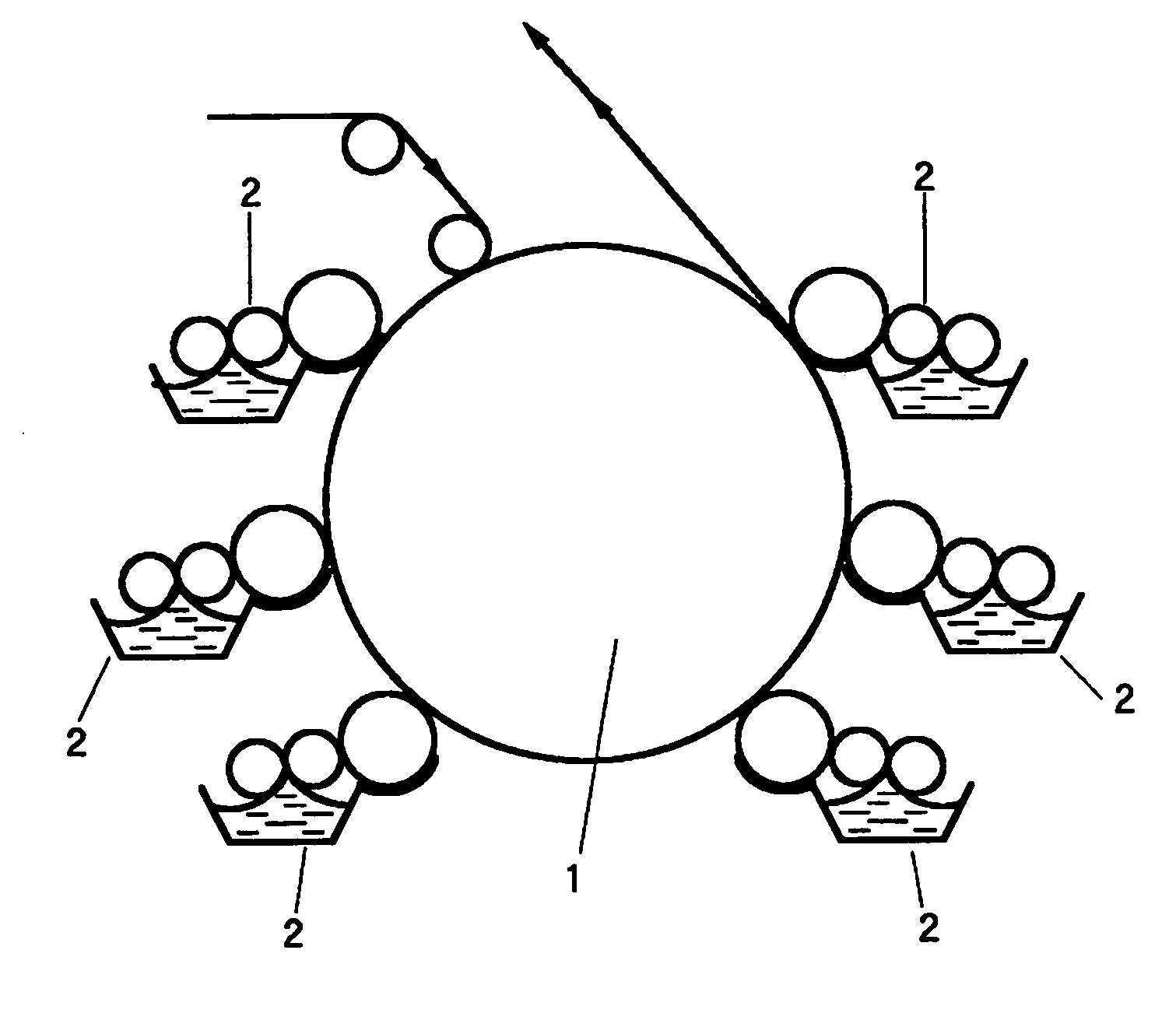Fabrication process of color filters, inks, color filters, and image displays using the color filters
a technology of color filters and inks, applied in the field of color filter manufacturing process, can solve the problems of reducing the resolution and positional accuracy of printed pixels, the difficulty of forming the resist with which the pixel pattern is formed, and the difficulty of forming the resist, etc., to achieve good accuracy, good accuracy, and good accuracy.
- Summary
- Abstract
- Description
- Claims
- Application Information
AI Technical Summary
Benefits of technology
Problems solved by technology
Method used
Image
Examples
example 1
(a) Finely-Dividing Processing of Pigments
[0087] PR254, PG36, PY138, PY139, PB15-6 and PV23 were provided as pigments, and by the below-described procedure, were successively subjected to finely-dividing processing. With respect to each pigment, the pigment (100 parts) was charged together with sodium chloride powder (400 parts) and diethylene glycol (130 parts) into a kneader which was equipped with a pressure lid. They were premixed until evenly wet aggregates are formed in the kneader. The pressure lid was then closed, and then, kneading and grinding were initiated while holding the contents under a pressure of 6 kg / cm2.
[0088] Kneading and grinding processing was conducted for 7 hours while controlling the temperature and flow rate of the coolant water such that the contents were maintained at 40 to 45° C. The thus-obtained ground mixture was poured into 2% sulfuric acid (3,000 parts) which had been heated to 80° C., followed by stirring for 1 hour. The resulting mixture was t...
example 2
(a) Production of Perforated Mask for Pixel Transfer Film
[0097] A PET film with a release layer formed thereon was provided in advance by applying an aqueous solution of a polyvinyl alcohol-methylolmelamine (7:3) initial condensation product and baking and curing the initial condensation product. Over the release layer, a 40% solution of t-butyl methacrylate-styrene-methoxypolyethylene glycol methacrylate (50:10:40) copolymer, nitrocellulose and carbon black pigment (5:4:1) in methyl ethyl ketone was evenly applied to give a dry film thickness of approx. 8 μm, so that a self-burning mask film was formed. In accordance with a pixel pattern of a stripe arrangement of the three RGB primary colors formed on a computer screen, the mask film was subjected to laser abrasion by a low-energy laser to obtain a pixel transfer film with a perforated mask formed thereon.
(b) Production of Transfer Film by Flexographic Printing
[0098] Following the printing operations of the pixels in the proc...
example 3
(a) Preparation of Red, Green and Blue Pigment Dispersions
[0100] In accordance with the formulas shown below in Table 3, the red pigment mixture, green pigment mixture or blue pigment mixture was used. A solution of Polymer 2 and deionized water were added, followed by agitation for 2 hours in a dissolver. After confirming that aggregates of the pigment were no longer contained, dispersion processing was conducted at a circumferential speed of 14 m / s by using the same horizontal, medium-containing disperser as that employed in Example 1. Filtration was then conducted through a 400-mesh stainless screen. Those operations were repeated to prepare red, green and blue pigment dispersions. By the particle size measuring instrument, “MODEL N-4”, the average particle sizes of the pigment dispersions of the individual colors were measured. Their average particle sizes were found to fall within a range of from 80 to 110 nm. The solution of Polymer 2, which was used as a pigment dispersant ...
PUM
| Property | Measurement | Unit |
|---|---|---|
| particle size | aaaaa | aaaaa |
| width | aaaaa | aaaaa |
| width | aaaaa | aaaaa |
Abstract
Description
Claims
Application Information
 Login to View More
Login to View More - R&D
- Intellectual Property
- Life Sciences
- Materials
- Tech Scout
- Unparalleled Data Quality
- Higher Quality Content
- 60% Fewer Hallucinations
Browse by: Latest US Patents, China's latest patents, Technical Efficacy Thesaurus, Application Domain, Technology Topic, Popular Technical Reports.
© 2025 PatSnap. All rights reserved.Legal|Privacy policy|Modern Slavery Act Transparency Statement|Sitemap|About US| Contact US: help@patsnap.com


